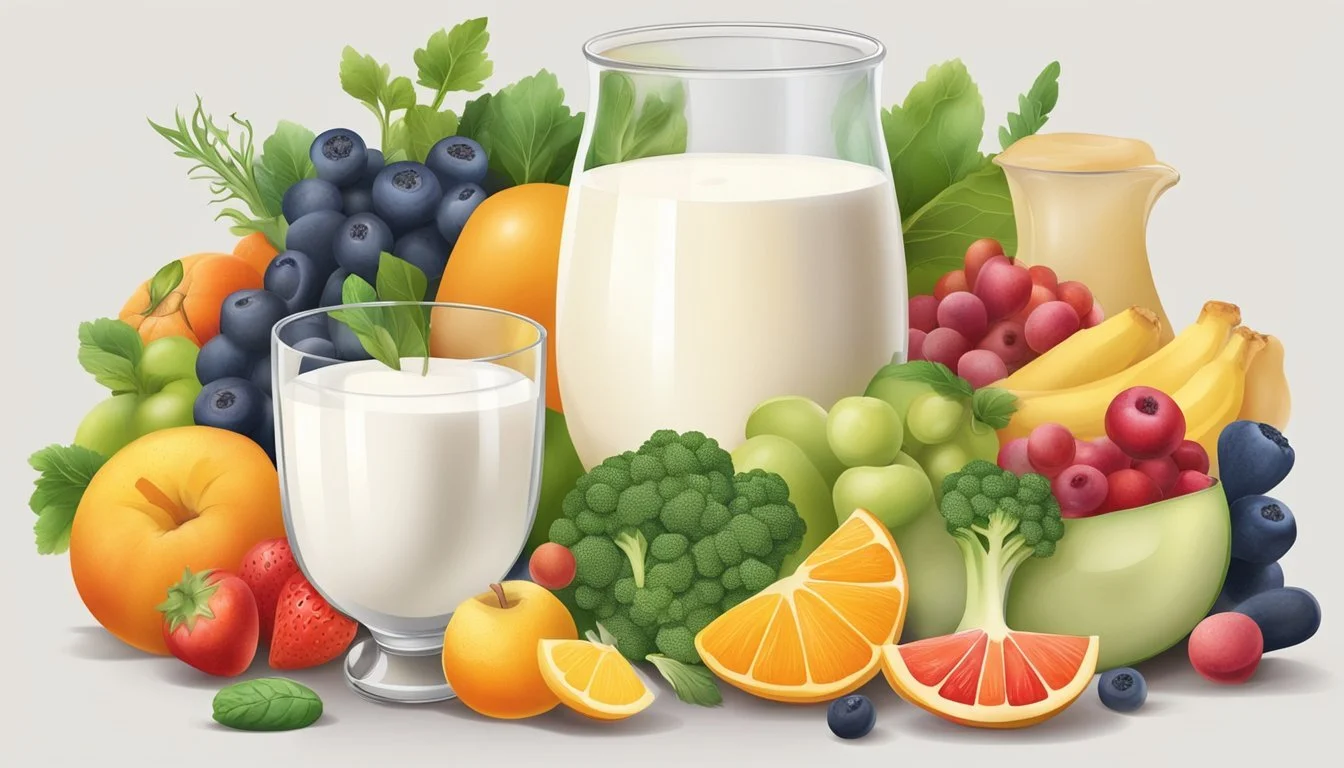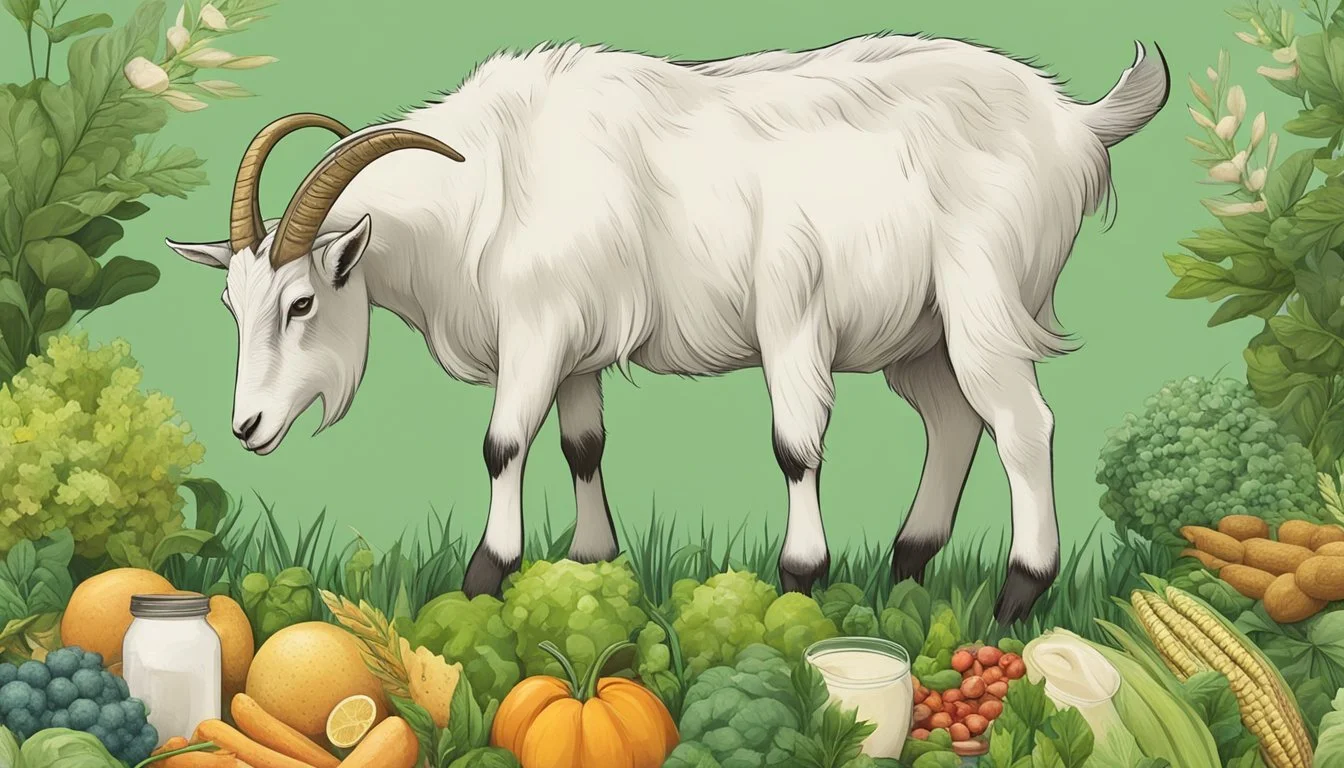The Significance of Goat Milk in Lactation Diets
Benefits for New Mothers
Goat milk has garnered attention in discussions about optimal nutrition during lactation. New mothers often seek out the best dietary choices to support their health and the well-being of their infants. Goat milk is considered advantageous as it is easier to digest compared to cow's milk and offers a profile of nutrients that may be beneficial during the postpartum period. The composition of goat milk includes a unique mixture of oligosaccharides similar to human milk which are vital for infant health. Studies suggest that these oligosaccharides play a role in developing the infant's gut microbiota and immune system.
A diet inclusive of goat milk can be a pivotal part of a lactation diet for new mothers. The potential benefits of incorporating goat's milk for pregnant and breastfeeding women include its high levels of calcium and the presence of essential fatty acids. As with any lactation diet, the goal is to provide a wide spectrum of nutrients to ensure both the mother and the baby are receiving adequate nourishment during this critical phase. Goat's milk is also rich in vitamin A and magnesium, which contribute to the overall nutritional value for lactating mothers.
Despite the potential advantages, it is important for new mothers to consider goat milk as part of a balanced diet. Consulting with healthcare providers about individual nutritional needs during lactation can provide personalized guidance. As breastfeeding is a significant factor in an infant's development, the choice of incorporating goat milk into a lactation diet should be made with careful consideration of both scientific research and the mother's health status.
Nutritional Composition of Goat Milk
Goat milk is a rich source of various nutrients, making it a worthwhile consideration for new mothers. It presents an intricate balance of macro and micronutrients alongside bioactive compounds that contribute to its nutritional profile.
Macro and Micronutrients
Goat milk contains a higher concentration of essential nutrients compared to cow milk. Specifically, it boasts approximately 4.5% fat, 3.6% protein, and 4.3% lactose. The mineral content is also noteworthy, with about 0.8% of minerals including substantial amounts of calcium, phosphorus, and magnesium, as well as trace elements like iron and zinc. The fatty acid composition is similarly beneficial; it includes oleic acid and conjugated linoleic acid, both known for their positive effects on health.
Fat: About 4.5%, including essential fatty acids
Protein: Around 3.6%, comprising both casein and whey
Lactose: Approximately 4.3%, suitable for those with slight lactose sensitivities
Minerals: Rich in calcium, magnesium, and other essential minerals
Bioactive Compounds in Goat Milk
Goat milk also contains various bioactive compounds that can be beneficial to health. Researchers have identified that proteins in goat milk possess anti-inflammatory and antioxidant properties, making them potentially advantageous for individuals with chronic inflammatory conditions. Another noteworthy component is conjugated linoleic acid which has been linked with numerous health benefits, including anti-carcinogenic and anti-atherogenic effects.
Anti-inflammatory Properties: Proteins in goat milk can mitigate inflammatory responses
Antioxidant Capabilities: Helps combat oxidative stress
Conjugated Linoleic Acid: May offer protection against various health issues
Health Benefits of Goat Milk
Goat milk is a noteworthy contribution to lactation diets due to its dense nutrition profile and unique composition that offers significant health benefits for new mothers and the general population.
Goat Milk and Human Health
Goat milk is rich in bioactive compounds and proteins, which serve pivotal roles in human health. Its anti-inflammatory properties may aid individuals with chronic inflammatory issues like arthritis and allergies. The protein content of goat milk not only supports bodily functions but its specific fatty acid composition includes short and medium-chain fatty acids which are easier for humans to digest.
Additionally, goat milk showcases a lower allergenic potential compared to cow's milk, making it a valuable alternative for those sensitive to dairy products. When it comes to calcium and iron, goat milk proteins enhance the bioavailability of these minerals, imperative for bone health and preventing anemia, especially in lactating women.
Comparison to Cow's Milk and Human Milk
Fat (%): Goat Milk - 4.5, Cow Milk - lower, Human Milk - lower
Protein (%): Goat Milk - 3.6, Cow Milk - lower, Human Milk - similar
Lactose (%): Goat Milk - 4.3, Cow Milk - higher, Human Milk - similar
Minerals (%): Goat Milk - 0.8, Cow Milk - similar, Human Milk - lower
Total Solids (%): Goat Milk - 13.2, Cow Milk - lower, Human Milk - lower
Comparatively, goat milk contains more total solids, fatty acids, and proteins than cow and human milks, suggesting a richer nutritional offering. It offers a different fatty acid composition and presents less lactose, which can be easier to tolerate for those with lactose sensitivity. The higher mineral content in goat milk, like calcium and phosphorous, is also noteworthy, potentially leading to better absorption and utilization in the human body.
It should be noted that while goat milk has a distinct nutritional advantage, human milk contains irreplaceable immune and development benefits for infants, which cannot be substituted. However, for new mothers and other adults, goat milk serves as a nutrient-rich alternative to cow milk, bolstering the health benefits, especially in lactation diets where optimal nutrition is paramount.
Goat Milk Production
The production of goat milk is a multifaceted process influenced by various factors, ranging from breed and lactation stage to management protocols. Understanding these can aid in optimizing milk yield and quality.
Factors Affecting Goat Milk Output
Different breeds of dairy goats exhibit variations in milk yield and composition, which are further modulated by the stage of lactation. As dairy goats progress from early to mid and late lactation stages, their daily milk yield tends to decrease significantly. Alongside breed and lactation stage, factors such as diet composition, body weight, body condition score, and season can also affect milk production. For instance, the quality of grass the goats consume influences the total solids content of the milk, while adequate feed intake prevents a negative energy balance that may impair milk output.
Body Condition Score: Directly correlates with reproductive a performance and milk production efficiency.
Diet Composition: A balanced diet contributes to optimal milk total solids and helps maintain mammary gland health.
Season: Seasonal variations can impact both quantity and quality of goat milk, necessitating adjustments in management practices.
Optimizing Production Through Management
Effective management practices, including regular monitoring of somatic cell count and adjusting feed intake based on goat's negative energy balance, are crucial for maintaining high standards of milk quality and yield. Attention to details such as ensuring proper body condition score and carrying out stage-specific feeding can lead to optimal milk yield and composition.
Feed Intake Management: Tailoring feed according to individual goat needs prevents negative energy balance.
Mammary Health: Monitoring somatic cell count helps in assessing the well-being of the mammary gland.
Implementing coherent and responsive management practices can significantly enhance goat milk production, providing new mothers with a quality lactation diet option.
Feeding and Supplementation in Dairy Goats
Proper nutrition is crucial for dairy goats to maintain optimal milk production and composition. This section explores how specific feeds and supplements impact the quality and volume of goat milk and outlines the dietary requirements throughout different stages of lactation.
Impact of Feed on Milk Composition and Yield
The composition and yield of goat milk are directly influenced by the dietary intake of macronutrients such as proteins and fats. Feeding practices tailored to dairy goat breeds shape the nutritional plane they reside on, directly relating to their lactational performance. A diet rich in high-quality forage tends to elevate total solids content in the milk. Conversely, excess fiber from low-quality forage may decrease the milk's nutritional value.
Inclusion of a balanced amount of energy-rich concentrates can help in meeting the high energy demands, especially in high-yielding breeds. It's essential to adjust the feed intake to prevent negative energy balance, which occurs when goats do not consume enough energy to sustain their milk production. This situation may lead to body fat and adipose tissue mobilization, which can adversely affect the milk yield.
Specific Dietary Needs Across Lactation Stages
Throughout different lactation stages, the nutritional requirements of dairy goats fluctuate markedly. In early lactation, goats often exhibit higher energy utilization due to the demands of milk synthesis. This period may require dietary supplementation to avert a negative energy balance that could otherwise prompt tissue mobilization. Strategic use of concentrates and high-energy feeds can provide the necessary boost.
As goats progress through lactation, their nutritional planes need to be monitored and adjusted. For example, increased grass and forage intake during mid-lactation can support the sustained milk output. Dietary decisions must also account for the varying needs among different breeds, as each breed may have unique nutritional demands that impact their total solids and fat content in milk.
Goat Milk in Different Cultures and Diets
Goat milk has long been a dietary staple in various cultures worldwide, valued for its nutritive properties and versatility in producing a range of dairy products.
Cultural Importance and Consumption Patterns
In Asia and Africa, goat milk holds a significant place due to its adaptability to diverse climates and terrains. For instance, in regions where cow's milk is less accessible, goat milk is a crucial part of daily sustenance. In Africa, it often serves not only as a food source but also as a commodity for trade and social transactions.
Asia: Here, the consumption patterns are deeply rooted in traditional practices, with goat milk contributing substantially to the daily diet. It is especially prevalent in rural areas where goat rearing is part of the agricultural fabric.
Africa: The dairy industry, though not as established as in Western countries, is gradually on the rise with goat milk as one of its key components. Small-scale farming dominates, making goat milk essential for nutritional security.
Goat Milk Products and Varieties
Goat milk is transformed into various products, each with unique characteristics and cultural significance.
Cheese: A cornerstone of the dairy industry, goat cheese varies widely in texture and flavor. Regions have their distinct methods of producing cheese, influencing the cheese quality and variety.
Yogurt: In many cultures, goat milk is preferred for yogurt-making due to its distinctive taste and goat milk proteins, which are believed to be more digestible for some consumers.
Butter and Sweets: While less common than cheese or yogurt, goat milk butter is a delicacy in some regions. Moreover, in numerous cultures, goat milk is a key ingredient in traditional sweets, evidencing its versatility.
Dairy Products: Beyond the fresh milk, fermented milk products and curds from goat milk are highly valued, with a noticeable presence in both everyday meals and special occasion dishes.
Through its inclusion in such a wide array of dairy products, goat milk proves indispensable in the cultural and dietary practices of many societies around the globe.
Scientific and Market Research on Goat Milk
Recent scientific exploration has shed light on the nutritional value of goat milk, particularly concerning its bioavailability for lactating mothers. Concurrently, market research indicates shifting consumption patterns favoring goat milk products.
Studies on Nutrient Bioavailability and Absorption
Various studies have examined goat milk's fatty acid composition and mineral bioavailability, finding that it might offer easier digestion and absorption than cow's milk. The free fatty acids in goat milk are thought to be more accessible, potentially aiding in the average daily gain of necessary nutrients for new mothers. Research methodologies typically involve robust experimental design, including statistical analysis tools like ANOVA and Pearson correlation, to validate findings.
Goat Milk Market Trends and Consumption
The global appetite for goat milk and its products is on the rise, with data indicating a growing market segment. In regions like New Zealand, dairy farmers are noticing a shift in consumer preferences, partially attributed to perceived health benefits. Market research suggests an increased demand for goat milk, including not only fluid milk but also yogurt, cheese, and other dairy goods. This trend is supported by quantitative analyses and market predictions detailing consumption rates and future market potential.
Functional and Therapeutic Potential of Goat Milk
Goat milk is gaining attention for its functional properties and therapeutic potential. It is a rich source of bioactive compounds that contribute to its significance in lactation diets for new mothers.
Potential in Disease Prevention and Treatment
Goat milk contains bioactive compounds such as oligosaccharides, which are known to foster beneficial gut bacteria growth, thus aiding in digestion and the immune system. Studies indicate these compounds may have a preventative role against gastrointestinal infections. The presence of antimicrobial peptides also contributes to goat milk's ability to combat microbes, which may be beneficial in reducing the risk of certain infections.
The anti-inflammatory properties of goat milk are supported by its cytokines and glycoproteins, components which can modulate immune responses. Through this immunomodulation, goat milk is considered to hold therapeutic potential for chronic inflammatory conditions anti-inflammatory effects. In terms of brain development, goat milk is a source of Neu5Ac (N-acetylneuraminic acid), a sialic acid that is vital for cognitive function and may support neonatal brain development when incorporated into the diets of lactating mothers.
Leveraging Goat Milk in Functional Foods
Functional properties of goat milk, such as its digestibility due to smaller fat globules and casein micelles, make it a candidate for inclusion in functional foods. These foods are designed to deliver specific health benefits beyond basic nutrition. Goat milk can be utilized as functional ingredients in developing products aimed at enhancing health and possibly preventing diseases.
Due to its composition, goat milk is also being explored for its therapeutic potential in various health conditions, with a particular focus on gut health and the management of allergies health benefits and functional properties. This research may lead to the creation of new functional foods that can promote health and serve as a part of a therapeutic diet, especially for new mothers who require additional nutritional support.





